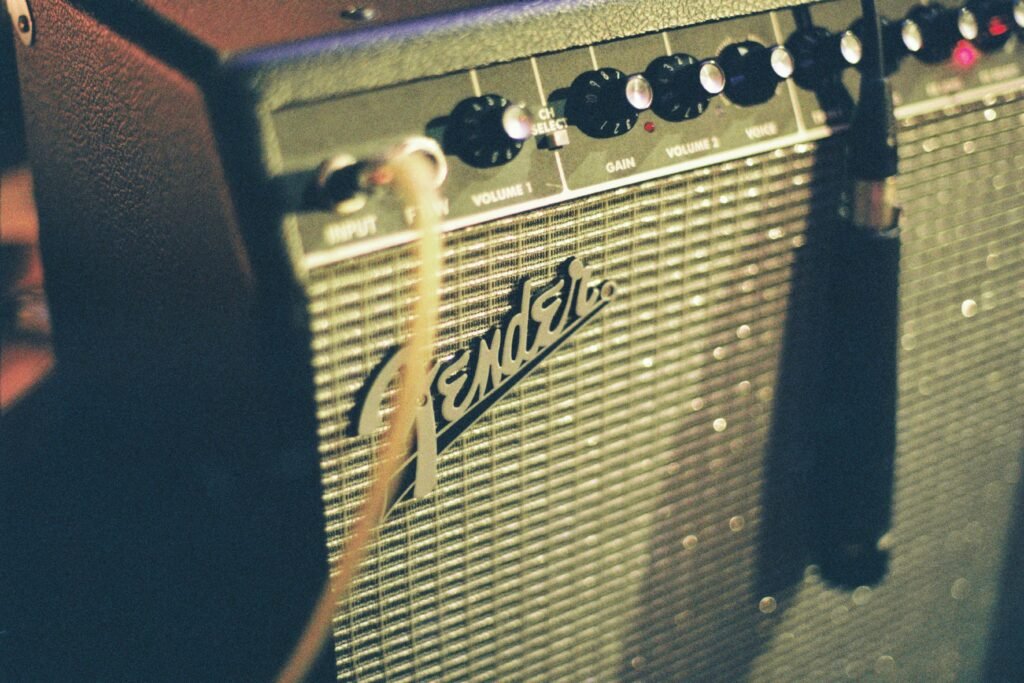Released in 1997, Homogenic stands as a pivotal moment in Björk’s career. Following the eclectic, genre-blurring experiments of Debut and Post, this album marked a sharp turn towards cohesion and intensity. Where her earlier solo work danced between house beats, jazz flourishes, and pop sensibilities, Homogenic planted its feet firmly in a sound that was at once industrial and organic. This was not a collection of songs but a singular, immersive world.
Sonic Exploration

Homogenic is a masterclass in sonic cohesion and emotional engineering. Produced primarily by Björk in collaboration with Mark Bell of LFO, the album blends icy string arrangements with jagged electronic beats in a way that still feels fresh decades later. The production is neither lo-fi nor overly polished. Instead, it’s crisp and intentional, with each sound carved sharply into place. This precision gives the album a clarity that enhances its emotional intensity. Nothing feels accidental. Every distorted snare, every bowed string, is chosen to evoke a specific feeling.
The arrangements on Homogenic walk a careful line between grandeur and restraint. Strings swell like the score of a chamber opera, but they are often undercut by sharp, syncopated beats that echo the urgency of techno and IDM. Tracks like “Jóga” and “Bachelorette” showcase this duality. In “Jóga,” a lush string section arcs over broken rhythms, giving the song a feeling of being both rooted and untethered. Meanwhile, “5 Years” grinds with a mechanical ferocity, its metallic percussion slicing through Björk’s impassioned vocals. She doesn’t merely sing—she breathes, growls, and howls, using her voice as an instrument of raw feeling rather than just melody.
Genre-wise, Homogenic defies easy classification. It fuses elements of trip-hop, classical, IDM, and industrial with an undercurrent of pop structure. But it doesn’t settle into any of these lanes. Instead, it creates a hybrid space that reflects Björk’s refusal to be boxed in. While it carries the DNA of her earlier work, especially the trip-hop influence from Post, Homogenic feels more self-contained. It’s not a collage, but a sculpture—cut from one block of sound, emotion, and vision.
Lyrical Analysis

At its core, Homogenic is a deeply emotional record, and the lyrics serve as its most direct conduit. The central theme is one of emotional extremity—love that borders on obsession, heartbreak that feels cataclysmic, and self-possession forged in solitude. Björk explores these feelings not through conventional storytelling but through fragmented poetry and visceral imagery. Her words don’t always follow a clear narrative arc, but they strike with emotional precision.
Lyrical Depth
On “Jóga,” she dedicates the song to her best friend, calling it a tribute to emotional landscapes. The lyrics are sparse but potent: “This state of emergency / How beautiful to be.” Here, emotional chaos is not something to fear but to embrace. This idea recurs throughout the album—that vulnerability is a kind of strength, and turmoil a form of beauty.
“Bachelorette” reads like a tragic fable, a tale of a woman returning to herself after becoming lost in another. It’s mythic in tone, with repeated lines like “I’m a fountain of blood in the shape of a girl,” merging the physical with the metaphorical. Björk often uses the body as a metaphor for emotional states, blurring the line between inner and outer worlds. This poetic abstraction allows her to universalize personal pain.
Yet for all its metaphor, Homogenic never feels emotionally distant. The lyrics are raw, sometimes almost primal. On “5 Years,” she rages against betrayal with a mix of fury and resolve: “You think you’re denying me of something / Well I’ve got plenty.” These lines are not polished with literary flourish, but they cut deep in their plainspoken defiance.
Overall, the lyrics on Homogenic are not always meant to be decoded. They are meant to be felt. They hang in the air like fog, heavy with meaning, yet never fully defined. This ambiguity makes the album resonate on a personal level. Each listener finds their own reflection in its words.
Cohesion and Flow

One of Homogenic’s greatest strengths is its remarkable cohesion. From the first thrum of strings in “Hunter” to the fading echoes of “All Is Full of Love,” the album unfolds like a single emotional arc. Each track transitions smoothly into the next, not just in terms of sound, but in emotional tone. There’s a narrative undercurrent—not in the traditional sense of plot, but in the ebb and flow of feeling. It begins with a quest for identity and control, peaks in moments of intense emotional confrontation, and resolves in quiet, redemptive acceptance.
The sequencing plays a key role in this journey. “Hunter” sets the tone with its cold beats and introspective lyrics, introducing the listener to a solitary figure searching for purpose. By the time we reach the volcanic fury of “Pluto,” we’ve moved through vulnerability (“Unravel”), defiance (“5 Years”), and heartbreak (“Immature”). “Pluto” is the album’s breaking point, a purging track that tears everything down. Then comes “All Is Full of Love,” a stunning coda that offers hope and renewal. It doesn’t erase the pain but transcends it.
Stylistically, Homogenic maintains a tight palette. The interplay between classical strings and industrial beats runs through the entire album, creating a unified sonic identity. Even when the intensity shifts—from the lush, cinematic scope of “Bachelorette” to the skeletal minimalism of “All Neon Like”—the textures feel part of the same world. There are no detours, no tracks that feel out of place or indulgent. Every moment serves the greater emotional and aesthetic whole.
Standout Tracks and Moments
While Homogenic is best experienced as a complete work, several tracks rise to the surface as singular peaks of artistry and emotion.
Jóga
Chief among them is “Jóga,” a song that perfectly captures the album’s central duality—nature and technology, tenderness and strength. The way the cinematic strings swell and collapse around glitchy, broken beats mirrors the emotional turbulence at the song’s heart. It’s both intimate and epic, and Björk’s vocal delivery feels almost spiritual in its vulnerability.
Bachelorette
“Bachelorette” is another high point, a gothic tale wrapped in one of the album’s most dramatic arrangements. The orchestration is rich and theatrical, driven by a relentless rhythm that mirrors the obsessive pull of the lyrics. The song feels like a tragic aria, and its cyclical structure reinforces the idea of being caught in an emotional loop, unable to break free.
Unravel
“Unravel” offers a more hushed, contemplative counterpoint. Its sparse arrangement—just a gentle pulse beneath swirling, ambient textures—creates space for one of Björk’s most tender vocal performances. The lyric “When you come back / We’ll have to make new love” is simple, but it lands with devastating grace.
Memorable Moments
One of the most arresting moments comes in “Pluto,” where Björk trades in melody for pure catharsis. Her voice becomes a scream, dissolving into distortion and noise. It’s a moment of total collapse, and it hits with startling force. Following this emotional purge, “All Is Full of Love” arrives like a quiet dawn. Its message of renewal, carried by serene electronics and ethereal harmonies, brings the album to a close with a sense of healing that feels both earned and necessary.
Artistic Contribution and Innovation

Homogenic occupies a singular place not just in Björk’s discography, but in the broader landscape of contemporary music. At the time of its release, electronic music was flourishing in underground scenes and slowly inching into the mainstream. Yet few artists approached it with the conceptual clarity and emotional depth that Björk brought to this album. Rather than using electronic tools as a stylistic flourish, she embedded them at the core of her artistic expression. In doing so, Homogenic didn’t just participate in the genre—it redefined its potential.
One of the album’s most innovative qualities is its seamless integration of classical and electronic elements. While hybrid sounds had existed before, Björk’s use of string arrangements wasn’t ornamental. They were foundational, written with the emotional intensity of a film score and then layered against brittle, often aggressive beats. This balance of beauty and abrasion created a soundscape that felt wholly original, one that many artists have since tried to emulate but few have matched in depth or intent.
The album also broke ground in its vocal treatment and lyrical abstraction. Björk treated her voice not just as a vessel for melody but as a dynamic instrument. On tracks like “Pluto” and “5 Years,” she explored extremes of tone and texture, pushing her vocal performance beyond conventional pop or even avant-garde boundaries. Her lyrics, meanwhile, rejected linear storytelling in favor of emotional and symbolic depth.
Closing Thoughts

Homogenic is a landmark album that continues to resonate more than two decades after its release. Its strength lies in its unflinching emotional honesty, its sonic boldness, and its unwavering commitment to a singular artistic vision. Every element—from the frostbitten string arrangements to the fractured electronic beats, from the haunting lyrics to the vocal performances that veer between fragility and ferocity—works in harmony to create a world that feels both alien and deeply human.
There are few, if any, weaknesses to point to. Some listeners might find the album’s intensity challenging, or its abstraction opaque. But these qualities are not flaws—they are part of what makes the album such a powerful and enduring experience. Homogenic asks something of its audience. It demands attention, vulnerability, and patience. In return, it offers a kind of catharsis that few records achieve.
In the context of Björk’s career, this album represents a turning point. It was the moment she fully claimed her identity not just as a pop innovator, but as a composer and conceptual artist. It set the stage for even more experimental work in the years to come, yet remains one of her most accessible and emotionally direct albums.
Official Rating: 10/10
For its artistic bravery, its technical innovation, and its lasting emotional impact, Homogenic earns a perfect score. This rating reflects not just its excellence in craft, but its enduring influence on music and its ability to speak to listeners across time, culture, and genre. It’s not just an album—it’s a benchmark. An emotional atlas. A masterpiece.
